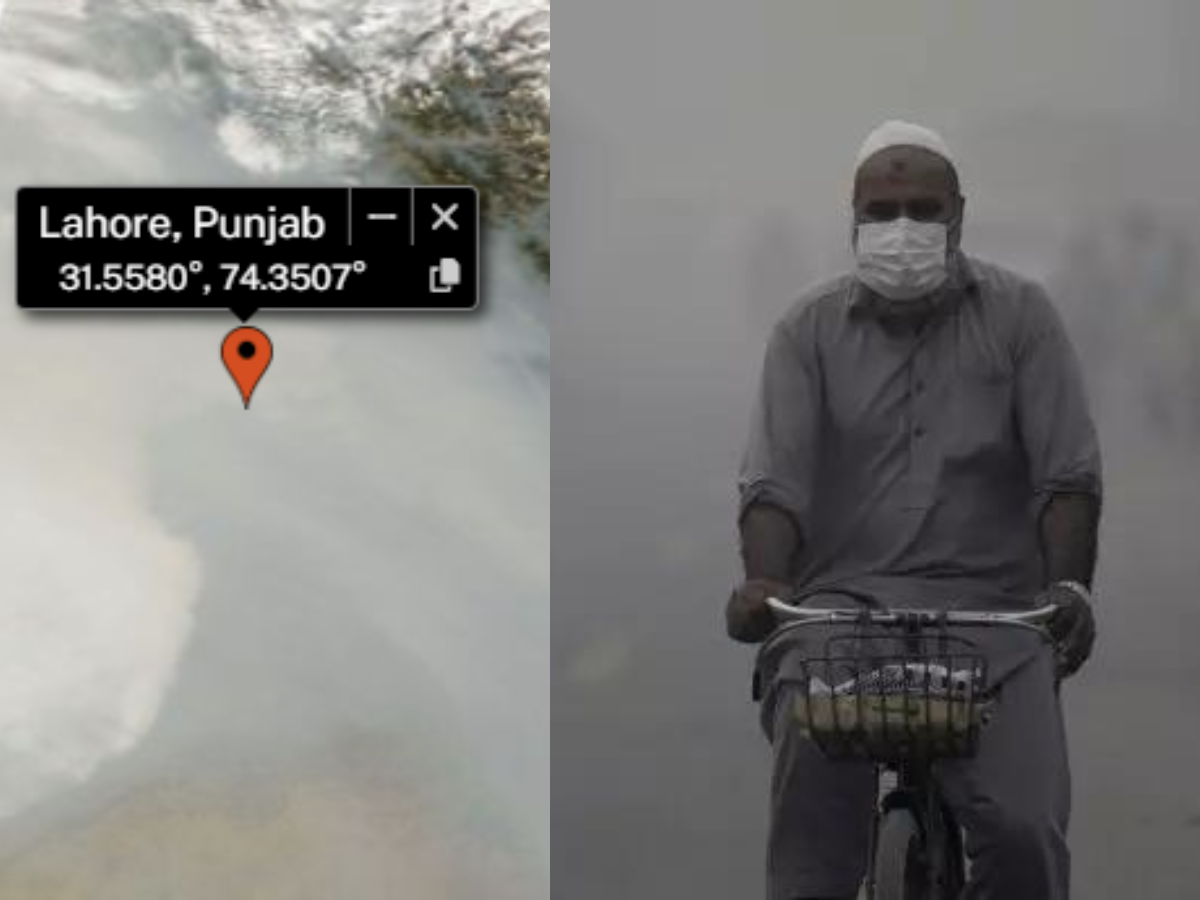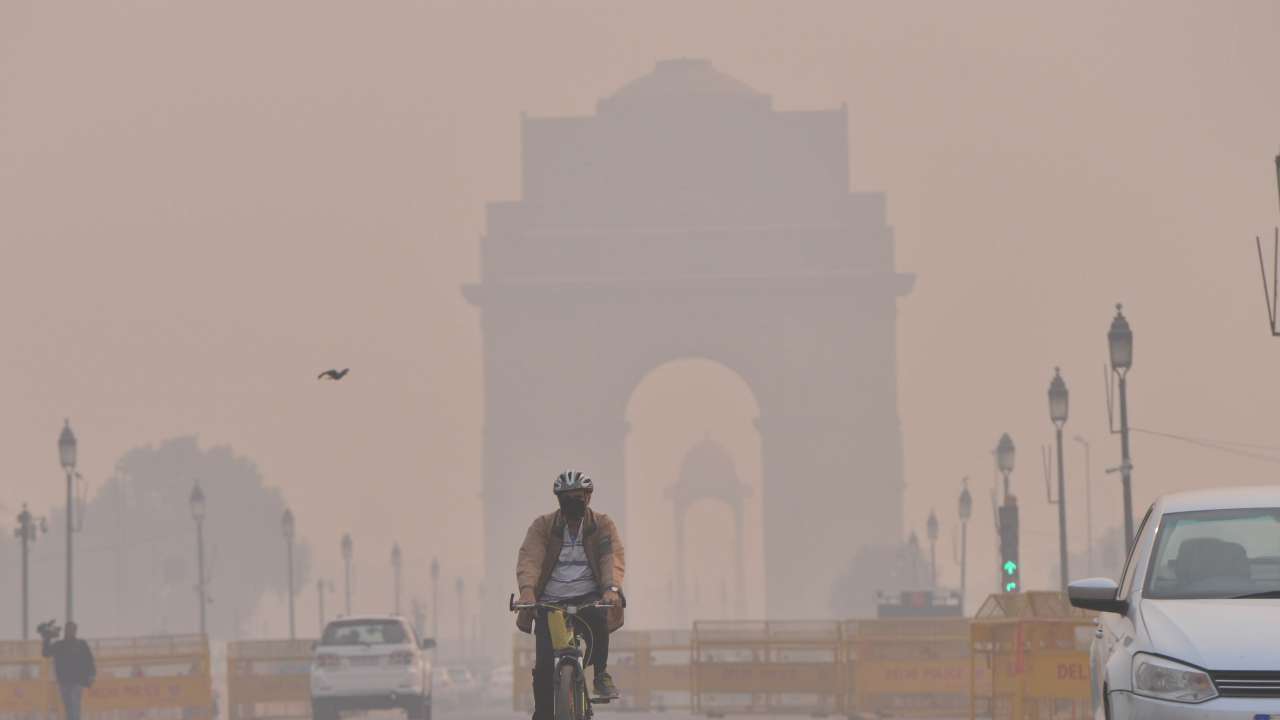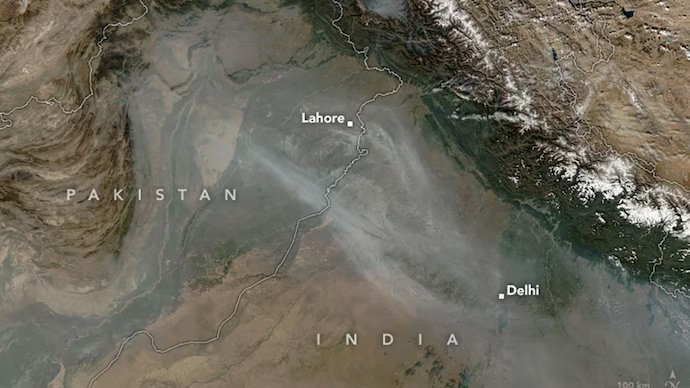Amid record-breaking pollution in Pakistan and northern India, satellite images show a thick layer of smog over major cities, prompting drastic measures to protect public health.
A Grim Picture of Smog Across Borders.
In a striking reminder that environmental crises do not respect national borders, a recent satellite image released by NASA reveals a dense, toxic layer of smog smothering eastern Pakistan and northern India. The image, marked with location pins for Lahore and New Delhi, starkly captures both cities blanketed in a haze of grey pollution. As pollution levels reach hazardous thresholds, authorities in Pakistan have been forced to close schools and restrict public access to recreational spaces to safeguard health, particularly for vulnerable populations.
Pollution Peaks: Lahore and Delhi Among World’s Worst.
Lahore, a sprawling city of 14 million on the Pakistan-India border, has consistently ranked among the most polluted cities worldwide. Recently, however, its air quality has reached new lows. Last week, Swiss environmental monitoring group IQAir gave Lahore a staggering pollution index score of 1,165—far exceeding safe levels. By comparison, New Delhi’s Air Quality Index (AQI) hovers around 350, still hazardous but significantly lower than Lahore’s. An AQI below 50 is considered safe for public health, highlighting the severity of the situation in both cities.
The implications are dire: high concentrations of particulate matter and other pollutants pose serious health risks, particularly for children, the elderly, and those with pre-existing conditions. The World Health Organization (WHO) warns that exposure to air pollution is linked to strokes, heart disease, respiratory illnesses, and even cognitive impairment in children.

Emergency Measures in Pakistan: School Closures and Smog “War Room”.
As pollution levels continue to climb, Pakistani authorities have implemented urgent measures in an attempt to mitigate the impact on public health. Schools in Lahore have been closed until at least November 17 to limit children’s exposure to the toxic air. The provincial government in Punjab has also established a “smog war room,” an emergency operations hub where teams from eight departments are coordinating efforts to curb air pollution. Key tasks include controlling the burning of farm waste, a major contributor to the smog, and managing traffic to reduce vehicle emissions.
The government has also enacted a series of additional restrictions: access to parks, zoos, playgrounds, historic monuments, museums, and other public areas is currently restricted. To further reduce pollution, bans have been placed on polluting tuk-tuks with two-stroke engines, as well as restaurants operating barbecues without proper filters. In Multan, another densely populated city around 350 kilometers from Lahore, AQI levels reportedly reached over 2,000 last week, signaling extreme health hazards.
Seasonal and Structural Causes of the Crisis.
The toxic blanket of smog over South Asia is largely the result of seasonal environmental factors combined with structural pollution sources. Each winter, cooler temperatures and sluggish winds trap pollutants close to the ground, exacerbating the effects of emissions from factories, vehicles, and the burning of agricultural stubble. In particular, stubble burning in rural areas, a common agricultural practice in both India and Pakistan, releases enormous amounts of fine particulate matter into the air. The resulting smog not only impacts local regions but also crosses borders, affecting entire populations across South Asia.
Adding to the issue is the widespread use of low-grade fuel in both factory and vehicle emissions, a factor that experts say will require policy reform and international cooperation to address. Both countries face infrastructural challenges that make it difficult to reduce pollution levels on their own, and environmental organizations have urged the international community to prioritize air quality improvements in South Asia.
The Health Toll: PM2.5 and Its Devastating Impact.
A major component of the smog blanketing Lahore, Delhi, and other cities is PM2.5, a dangerous type of fine particulate matter that can penetrate deep into the lungs and enter the bloodstream. Generated by fossil fuel combustion, dust storms, and stubble burning, PM2.5 particles are associated with a host of serious health conditions, including asthma, cardiovascular diseases, lung cancer, and cognitive impairments, especially in children. The WHO has identified air pollution as one of the most significant environmental health risks globally, with adverse impacts felt disproportionately by the most vulnerable populations.
In densely populated cities like Lahore and Delhi, the high levels of PM2.5 create severe respiratory challenges, often resulting in an increased number of hospital admissions during peak pollution seasons. Long-term exposure has been linked to decreased life expectancy and chronic respiratory issues, leading experts to label the air quality crisis a “public health emergency.”
)
Cross-Border Smog Crisis: Urgent Calls for Joint Action.
While smog has long been a seasonal issue in northern India and Pakistan, the increasing frequency and intensity of air pollution events underscore the urgent need for a coordinated response. Environmental organizations and health experts argue that air pollution should be a top priority for regional cooperation between India and Pakistan, given the transboundary nature of the crisis.
In recent years, both countries have made strides in recognizing the impact of air pollution on public health. However, policy implementation remains a challenge, hindered by political tensions and resource limitations. Environmental groups emphasize that a comprehensive, long-term strategy is essential to tackle the root causes of pollution and protect vulnerable communities from its effects.
Looking Forward: Climate Goals and Public Health.
The air quality crisis in South Asia also raises questions about broader climate goals, particularly in the context of the Paris Agreement. With COP29 underway in Azerbaijan, activists are calling on the international community to hold countries accountable for their commitments to reduce emissions and support sustainable development. Air pollution, they argue, is both an environmental and social justice issue, disproportionately impacting low-income communities with limited access to healthcare.
As Lahore and Delhi contend with hazardous pollution levels, the spotlight is on regional leaders to implement policies that will protect public health and prevent further environmental degradation. The smog crisis has made it clear that the stakes are high: without urgent action, the health and well-being of millions remain at risk, underscoring the need for both national and international commitments to clean air and sustainable practices.

